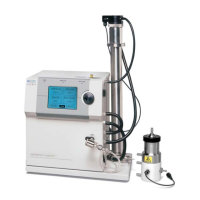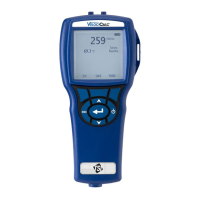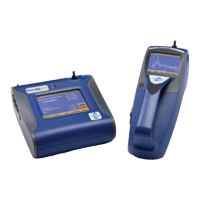B-2 Model 3936 Scanning Mobility Particle Sizer
TM
(SMPS
TM
) Spectrometer
The interface hardware was developed by TSI Incorporated.
Knutson [1976] developed a data inversion technique for obtaining
the initial aerosol size distribution based on the measured particle
mobility distribution. A data inversion technique similar to
Knutson’s was used in the commercial DMPS/C data reduction.
The data inversion technique is based on the work of Plomp et al.
[1982] and Hoppel [1978], and the data reduction technique was
developed by Fissan et al. [1982]. The approximation of the bipolar
charge distribution on submicrometer particles has been taken
from the work of Wiedensohler [1986, 1987] and Wiedensohler and
Fissan [1988].
In 1989, Wang and Flagan improved upon the system by using a
dynamically scanned DMA voltage. This system, called SEMS
(Scanning Electrical Mobility Spectrometer), provided for rapid
aerosol distribution measurements. Instead of requiring several
intervals of ten minutes each to measure a size distribution, the
SEMS could provide results in less than one minute.
In 1993, TSI commercialized the scanning system as the SMPS
™
spectrometer,
In January of 1999 TSI began shipping a complete redesign of
earlier Classifier models as the Model 3080 with modular DMAs.
The instrument includes improvements such as:
Interchangeable differential mobility analyzers.
Recirculating flow for precise match of sheath and excess flows.
Microprocessor-controlled volumetric flow with laminar flow
element.
Convenient front-panel design with control knob and built-in
display.
Electronic control of flow, voltage, particle-size, and instrument
functions.
Impaction Theory and Operation
An impactor may be mounted on the outside of the Electrostatic
Classifier (see Figure B-1). The aerosol first enters an impactor,
which removes particles above a known particle size by inertial
impaction. The aerosol flow is accelerated through a nozzle directed
at a flat plate, as shown in Figure B-2.
